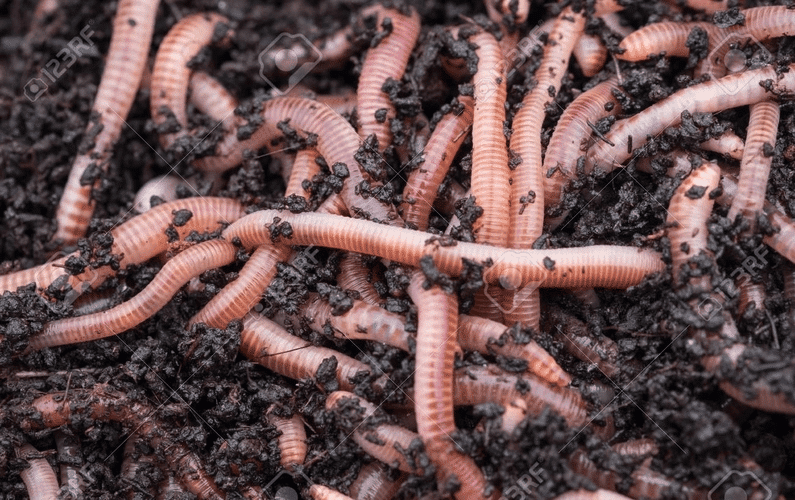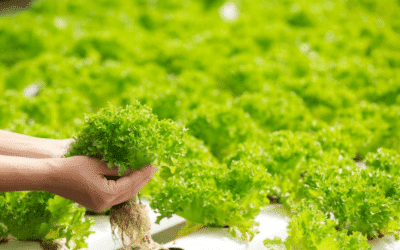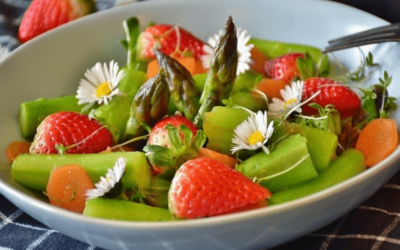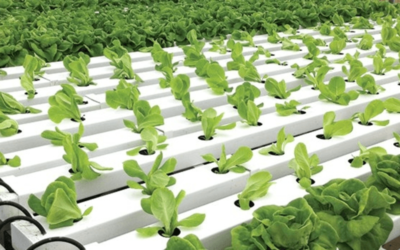Your garden is the ideal place to start practicing greener and eco friendlier living. Working in your garden is satisfying. Whether you grow prize roses, or vegetables to feed your family, sustainable gardening makes your efforts more rewarding. With a focus on preserving the soil and using resources wisely, eco friendly lifestyle gardening is cost-effective and easy to do. Here are some sustainable gardening principles you can start using in your garden right now.
- Composting
Eco friendly lifestyle homes take advantage of available resources and make the most of them. Recycle your food scraps, used coffee grounds, vegetable peeling and plant cuttings. By making your own compost you’re able to fertilise your garden for free. And you’ll provide your plants with a rich source of nutrients. Composting is a perfect example of green and eco friendly living.
To make your own composter, start by picking out a shady spot in your garden. Your compost heap should be larger than a cubic metre, but smaller than 5 cubic metres. The compost heap should be large enough to generate sufficient heat to break down the material.
Start with a layer of course material such as thin sticks or twigs. Then add a mixture of grass clipping and green and dried leaves. Then add some soil. You can also add manure to your compost heap, make sure it’s well-rotted. You don’t want to be inundated with flies or a subject your neighbours to the potent smell. Keep adding more layers to your heap in this order until it’s a about a metre high. Over time, the material will turn to compost.
These are typical items you’re able to add to your compost heap:
- Fruit and vegetable peelings
- Coffee grounds
- Tea bags
- Egg shells
- Lawn cuttings
- Nut shells
- Straw
- Paper
- Cardboard and eggs cartons
Composting ticks two greener and eco friendlier living habits off your checklist in one go. You end up sending less waste to the landfill, and you recycle organic materials at the same time. A third is, you feed your garden without it costing anything.
- Harvesting rainwater
Any gardener knows that a beautiful garden needs water. This is one of our most precious resources. When experiencing a drought, harvesting rainwater is the ideal way to start living green and eco friendly. A sound investment in the future.
Rainwater is used for watering your garden, washing your car and even flushing your toilets. It’s not suitable for human consumption unless you filter it, using rainwater for general purpose jobs reduces the strain on the municipal supply. And, you’ll save money on your water bill at the same time.
While purpose-built eco friendly lifestyle homes have water tanks installed below ground, with existing homes if not possible to install underground, they are easily installed above ground. You’ll need to take into account how much water you need, the collection area of your roof and the rainfall pattern in your area to determine what size water tank you need. Water tanks come in a variety of shapes and sizes, so you’re bound to find one that works best for your garden.
If you haven’t got the room for a water tank, there are other ways to keep your plants hydrated the green and eco friendly living way:
- Use mulch and ground cover to prevent water from evaporating.
- Create raised beds to collect water and let it soak into the ground.
- Use a watering can to water your garden instead of a hose pipe. That way you’ll use less water.
- Swap your direct irrigation system for a drip irrigation system. This is an efficient way of watering your plants.
Using water wisely is the cornerstone of greener and eco friendlier living. Water tanks are a great addition to eco friendly lifestyle homes. And in times of drought and water restrictions, you’ll prolong your supply of water to keep your garden blooming.
- Planting native plants
Choose native plants that are hardy and drought resistant. Not only do they contribute to greener and eco friendlier living, they require less maintenance. You’ll spend less time working on your garden, and more time enjoying it.
Native plants are well-adapted to local conditions so they don’t need as much water as foreign species. Indigenous trees, shrubs and flowers are more resistant to local pests and diseases. When planting trees consider their position and type to reduce your home’s heating and cooling costs.
Evergreen trees are green all year round so use them to form a windbreak and protect your home from chilly winds in winter. In summer, they’ll keep your home cool and comfortable. While deciduous trees lose their leaves in winter making them ideal for protecting the areas of your home that get the full sun in summer. Come winter, when the leaves fall off to let the sun in to warm the room.
Using plants to control the temperature of your home means you won’t have to rely as much on air-conditioners and heaters. If you adopt this green and eco friendly living trick you can make your home more comfortable and save on electricity. These natural methods are something that eco friendly lifestyle houses incorporate into their design from the start. And there’s no reason why you can’t do the same in your garden.
- Controlling pests organically
Gardens attract insects and while eco friendly gardeners recognise that some are beneficial, others are just pests. There’s no need to abandon your green and eco friendly living principles with them. From home-made insecticides to encouraging natural predators, there are organic ways to stop pests from ruining your garden:
- Natural solutions: Save your eggshells from breakfast, crush them up and spread them around the base of your plants. That will keep slugs and cut worms away. Sprinkle salt around on the soil to stop snails from taking over. Don’t go overboard though, too much salt in the soil isn’t good for your plants.
- Clean and tidy: Pests prefer untidy gardens. It gives them the chance to settle in and start breeding. So keep your lawn manicured and your beds tidy. Remove fruits and vegetables before they start rotting and become a food source for pests; and good for the compost heap.
- Install barriers. Physical barriers such as mesh and nets protect plants from pests. Loosely woven material protects plants while they get enough water and sunlight to grow.
- Insect-repelling plants. Citronella, marigolds, thyme, lemongrass and spearmint are all plants with insect-repelling properties. When planted in-between your shrubs they naturally repel pests – no need for chemicals.
- Encourage birds. Hanging a feeder gets birds to visit your garden. Birds are fond of snacking on bugs and will help control the pest population in your garden. Lizards and frogs are another natural form of pest control.
Save on expensive and damaging chemicals and use natural, greener and eco friendlier living methods to manage pests in your garden. You’ll discover that once you start working with nature, you’ll achieve the results you want with less effort, and costs.
- Old-fashioned garden maintenance
To maintain a garden you rely on a number of tools to keep it looking tidy. Lawn mowers, leaf blowers and hedge trimmers are an essential part of any gardener’s kit. Where possible, choose electric-powered equipment. You could invest in cordless tools to make your job easier.
Electric-powered lawn equipment creates less noise and air pollution than the gas-powered models. Electricity is also cheaper than fuel and another way of saving on costs of keeping your garden in tip-top shape. Alternatively, using a traditional push mower and get a workout while attending to your garden.
An alternative to leaf-blowers, is sweeping the driveways and sidewalks the old-fashioned way – and getting in a workout. Though it may take longer, it saves on fuel and noise pollution. Green and eco friendly living, though by working differently, saves costs in various ways.
And did you know that using a hoe to cultivate between your plants suppresses weeds and aerates the soil? Spending a few minutes in your garden every day and pulling weeds, by hand contains weeds and they won’t spread get out of control. Ten minutes daily beats hours of weeding once a month.
Working in your garden is as good for the garden as for your soul. By returning to greener living practices you re-discover the joy of spending time in nature.
- Designing eco friendly lifestyle gardens
Eco friendly lifestyle homes with eco friendly lifestyle gardens is a balanced eco-system. Compliment the indoors and outdoors, by following greener and eco friendlier living through to your outdoor spaces too. Whether working with an existing garden, or starting one from scratch using these tips create a garden that’s eco friendly:
- Recycle materials. If you want to build a deck or a patio, use recycled materials or a material that can be recycled such as wood or aluminium. Some manufacturers offer you a composite material made from a combination of plastic and wood particles. This type of decking is fade-resistant and easy to clean. It requires little maintenance and looks attractive.
- Plan your planting. Learn about native plants to make your garden attractive. The local nursery is able to help pick out indigenous plants that are ideal for our gardens. Native plants will help you to cut down on water usage, repel local pests. Have a beautiful garden. Use a combination of sun-loving and shade-loving plants appropriately. The more you know about the plants you want to use, the better your landscaping.
- Limit your lawn area. Lawns require frequently watering and care to keep them looking at their best. Consider whether you need a large lawn and if you don’t, experiment with other kinds or ground covers that don’t need as much water or maintenance. Natural grasses are just as attractive and are suited to droughts and our particular weather conditions.
- Make maintenance easy: Designing your garden in way that makes it easy to look after. Remember that green and eco friendly living is convenience. If you want to harvest rainwater for use in your garden, or start a composting heap, set aside space for these projects. Incorporate them from the start and make them part of your garden. Reduce the need for gas-guzzling or power-sapping garden tools. Working on your garden is a pleasure when approaching it differently.
When adopting green and eco friendly living gardening principles, changes the way you see your garden. Eco friendly lifestyle homes are about convenience, saving costs and being environmentally friendly. Everyone benefits when becoming mindful of how resources are used. Explore ways that you’ll enjoy and start a small project putting your ideas into practice.








